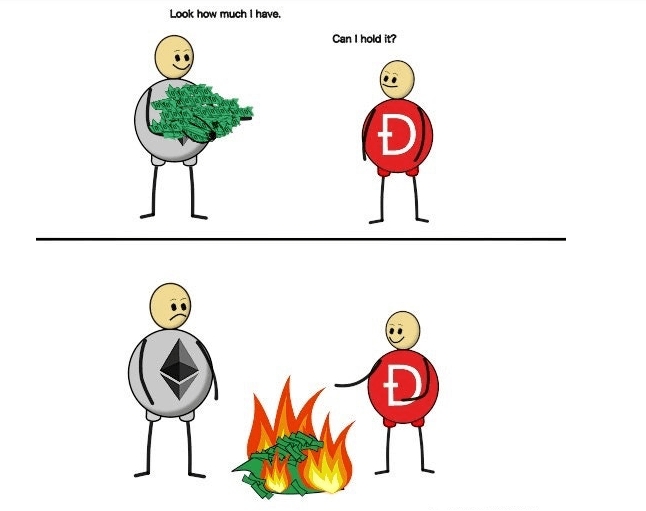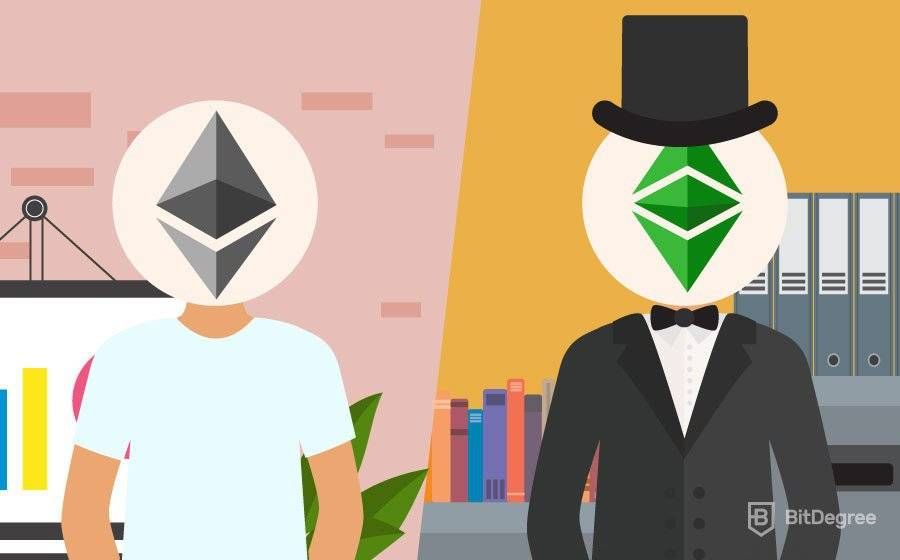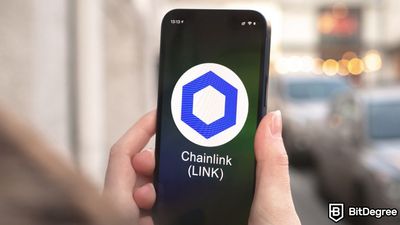Stop overpaying - start transferring money with Ogvio. Sign up, invite friends & grab Rewards now! 🎁
The 2016 story of the Ethereum split and Ethereum vs Ethereum Classic is a very interesting and important story to hear. This is because some people thought it was a great idea, while others hated it!
This easy to follow guide will start with an explanation of why the split happened and how it created a completely new blockchain and cryptocurrency called Ethereum Classic.
I will then explain how the two blockchains are different and how each of their currencies has performed in terms of price since the split.
Once you have read my Ethereum vs Ethereum Classic guide from start to finish, you will be able to decide for yourself which one you prefer! Either as an investor or as a user.
So, what are you waiting for? Let’s go and find out exactly what happened in the Ethereum split!
![How to Transfer Money Without Fees? [Animated Tips 2025] How to Transfer Money Without Fees? [Animated Tips 2025]](https://assets.bitdegree.org/crypto/assets/images/compare-crypto-exchanges.gif)
Did you know?
Subscribe - We publish new crypto explainer videos every week!
How to Transfer Money Without Fees? [Animated Tips 2025]
![How to Transfer Money Without Fees? [Animated Tips 2025] How to Transfer Money Without Fees? [Animated Tips 2025]](https://assets.bitdegree.org/youtube/crypto-finally-explained/how-to-transfer-money-without-fees-animated-tips-2025.jpg?tr=w-420)
![How to Transfer Money Without Fees? [Animated Tips 2025] How to Transfer Money Without Fees? [Animated Tips 2025]](https://assets.bitdegree.org/crypto/assets/video-button.png?tr=w-85)
Table of Contents
- 1. Ethereum vs Ethereum Classic: How It All Started
- 1.1. Create a Hard Fork
- 1.2. Do Nothing
- 2. What was Decided? Ethereum vs Ethereum Classic Split
- 3. Ethereum vs Ethereum Classic: The Differences
- 4. Ethereum vs Ethereum Classic: The Story So Far
- 5. Ethereum vs Ethereum Classic: Which Should You Use?
- 6. Ethereum vs Ethereum Classic: Conclusion
Ethereum vs Ethereum Classic: How It All Started
Ethereum, released in 2015 after being created by Vitalik Buterin in 2014, created blockchain possibilities far beyond just financial transactions. Unlike Bitcoin, which is only suitable for transferring funds, Ethereum allows people to create something called smart contracts.
Latest Deal Active Right Now:A smart contract allows two or more people to enter an agreement, without needing a third party. Basically, imagine you wanted to automatically send your friend some funds on their birthday every year.
Yes, you could just do it yourself by walking into your local bank, but how cool would it be to set up a smart contract so that you can send it automatically without the need for a bank?
This is only a very small part of what smart contracts can do; the possibilities they unlock are endless. Smart contracts can be created for just about anything. Rent, insurance, gaming, voting, investments and so much more!
They guarantee that a contract will be carried out fairly — it means there is nobody to have to trust.
To find out more about the smart contracts, you can read our What is a Smart Contract guide. Just make sure you come back as the Ethereum vs Ethereum Classic split story is just about to get really interesting!
So, knowing how great smart contracts were, somebody decided to create a new project called the DAO, which stood for Decentralized Autonomous Organization. The DAO concept was like a venture capital fund that would operate in a decentralized eco-system.
For the project to get started, it needed a large investment from the cryptocurrency community. When I say large, I mean very large. In fact, a total of $150 million in ETH was raised in just 28 days!
People were so excited about the DAO project that it raised almost 14% of all ETH coins in circulation!
What happened next will shock you. After the DAO had completed its investment campaign, it was hacked! Somebody stole more than 1/3, or $50 million, from the DAO's wallet.
This wasn’t a security issue with the Ethereum blockchain, it was because the DAO developers made an error when building the technology.
After the attack, with cryptocurrency investors worried that its price might fall, even more, the value of ETH quickly went from $20 to $13.
Because of how the DAO smart contract was built, the hacker could not access the stolen $50 million until after 28 days! So, the Ethereum community had to decide what to do about it.
The Ethereum developers suggested two possible options.
- Create a hard fork of the Ethereum blockchain
- Do nothing
This is where the arguments of Ethereum vs Ethereum Classic began, and here’s why!
Create a Hard Fork
If you are not sure what hard work is, it basically means that changes are made to the original code of a blockchain. Then the blockchain splits into two. (The new one consists of the nodes/computers in the blockchain that downloaded the update).
If small changes are needed it’s called a soft fork; if big changes are needed it is called a hard fork!
The idea put forward was that because so much money had been stolen and that the money would be available for the hackers to spend in 28 days, a hard fork should be made.
To understand what a hard fork is, think about the computer that you use.
- Imagine getting a notification from Windows one day saying that you had 28 days to upgrade your computer to the latest version, or it would no longer be able to recognize new updates.
- If you chose not to upgrade it, your computer would only recognize updates that happened before the hard fork!
- In the cryptocurrency world, anyone who doesn’t upgrade to the new software won't be able to validate new transactions!
By completing a hard fork of, it would allow the Ethereum developers to refund all of the people that lost their money from investing in the DAO.
Do Nothing
Some people felt that by creating a hard fork of the original blockchain, it would go against the belief that blockchains should be decentralized.
Although these people understood that lots of people lost their money, they thought it was more important to let Ethereum continue as it was.

They argued that the hack was not because of the Ethereum blockchain, but because of poor security within the DAO project. Ultimately, “code is a law”, and it can’t be overruled!
What was Decided? Ethereum vs Ethereum Classic Split
As changes can’t be made to a blockchain without it going to a vote, the Ethereum community had to decide which option was best. Which option would you have chosen?
Well, the majority of people decided that too much money was involved to do nothing, so they created a hard fork!
After the decision, the Ethereum blockchain kept its name but was now operating on a hard fork.
The people that disagreed with the fork decided to remain on the original blockchain. However, this was now called Ethereum Classic!
So now you know how the Ethereum vs Ethereum Classic argument started, and why it ended in a split! Now I am going to explain the main differences between the two blockchains!

Ethereum vs Ethereum Classic: The Differences
In reality, there really isn’t much difference between Ethereum and Ethereum classic at all! You have to remember that the hard fork was made to erase the $150 million that was sent to the DAO, not to make any specific technology upgrades.
Don’t forget, you might also see people describe the Ethereum split as ETC vs ETH. These are just the currency codes that are used to describe Ethereum Classic (ETC) and Ethereum (ETH)!
Let’s move on then, and see how the Ethereum vs Ethereum Classic split has gone so far!
Ethereum vs Ethereum Classic: The Story So Far
Now you should have a good understanding of the Ethereum vs Ethereum Classic story and how similar they are. Now, let’s find out how they have both performed since the 2016 split!
Ethereum has performed really, really well. In fact, in 2017 alone it increased its value by more than 10,000%! And is now the second most popular blockchain behind Bitcoin
There are quite a few reasons why Ethereum has done so well. Firstly, when new cryptocurrencies are created, a lot of them decide to build their project on top of the Ethereum blockchain.
Not only does this add value to Ethereum, but it also adds to its reputation and increases the demand for Ether. As it is required for all transactions made by the applications built on Ethereum.
Secondly, when raising funds, most ICOs (Initial Coin Offerings) now request Ethereum instead of Bitcoin. The amounts involved are normally quite large, so it yet again increases the demand for Ether!
Note: An ICO is a way for new cryptocurrency projects to raise funds. They normally request Ethereum and in return give investors their own newly created token/cryptocurrency!
Thirdly, the original development team that created Ethereum moved to the hard-forked blockchain, leaving Ethereum Classic behind. This includes Vitalik Buterin, who is one of the most respected developers in the blockchain community!
This gives people more confidence in the Ethereum project, which is why it has done so well.
Although Ethereum Classic is less popular than Ethereum, it has still become an established coin. In 2017 it saw gains of more than 1,500%, however, this is far less than Ethereum’s growth.

One of the reasons for this is that the development team is not as well-known as Ethereum’s. This gives people less confidence in what they can achieve.
Although fewer people are using Ethereum Classic, this does mean that transactions can be processed faster, as the network is less busy!
Now that you have a good understanding of how both coins have performed since the split, let’s see if I can help you decide which one to choose!
Ethereum vs Ethereum Classic: Which Should You Use?
Deciding on which cryptocurrency to use is a difficult question to answer. In Ethereum vs Ethereum Classic, there is no doubt that Ethereum has become far more successful than Ethereum Classic, which is clear to see in its value.
Not only is it popular with investors and ICO’s, but many new cryptocurrencies also build their platform on top of the Ethereum blockchain too. These positives have made Ethereum the second most popular cryptocurrency project.
However, maybe you disagree with the hard fork just like Ethereum Classic did? If you believe that it shouldn’t have happened, there is the potential that more and more people will agree in the long run.
One of the most interesting things to look forward to is the possible upgrade from Proof-of-Work to Proof of Stake. This will dramatically reduce the amount of energy required by nodes/computers to verify Ethereum transactions!
Ethereum developers are also working on new protocols for their upcoming Proof of Stake switchover. Which will increase the number of transactions that the Ethereum blockchain can process per second?
If ETC remains on Proof of Work, this will be the largest difference in technology that the two Ethereums have ever had.
Ethereum vs Ethereum Classic: Conclusion
If you have read our Ethereum vs Ethereum Classic guide from start to finish, you should now have a good understanding of why the split happened! No longer will you be wondering “What is Ethereum Classic?”!
As you now know, it is a really interesting story and something that people are still disagreeing on to this day! If you were involved in Ethereum at the time, would you have preferred to do a fork, or do nothing?
You should also now be able to make a decision on which coin you think will become the most successful in the future. Although Ethereum has done the best so far, do you think Ethereum Classic will do well too?
The great thing is, both coins are very easy to buy, as most exchanges list them!
So what did you think of my Ethereum vs Ethereum Classic guide? I would love to hear your thoughts!
Do you own any coins with either blockchain, if so, which one? Maybe you have decided to invest in both!
The content published on this website is not aimed to give any kind of financial, investment, trading, or any other form of advice. BitDegree.org does not endorse or suggest you to buy, sell or hold any kind of cryptocurrency. Before making financial investment decisions, do consult your financial advisor.














